Copyright 2020 - 2021 irantour.tours all right reserved
Designed by Behsazanhost
Aran & Bidgol City
Aran & Bidgol City
This small town situated only 12 km northwest of Kashan is actually the last important settlement before Salt Lake and the beginning of the desert. Its climate is much more affected by the desert than the climate of Kashan. It features hotter days and colder nights during unbearably hot summers and bitterly cold winters. The main water sources are qanats, the number of which, until recently, exceeded thirty. The inhabitants of Aran are industrious, tolerant, and self-effacing. The town's main industry is carpet weaving.
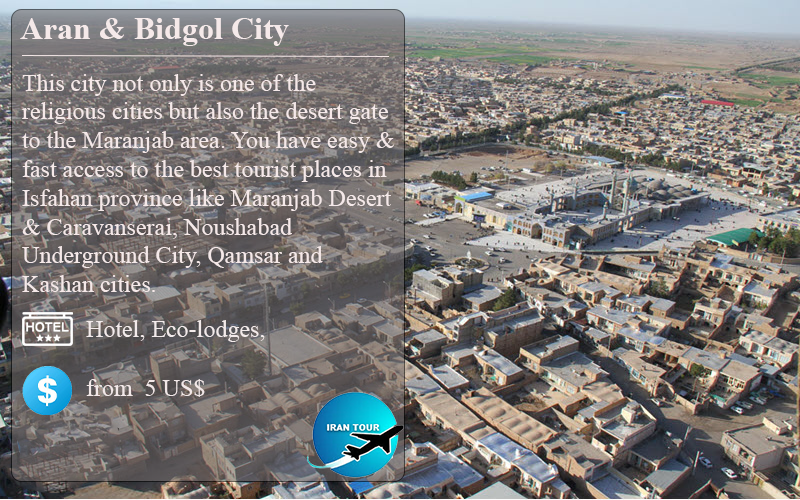 |
Aran is first mentioned in historical records in 989, but its foundation certainly dates from pre-Islamic times. No archaeological research has been carried on the site so far, although the town is very likely to be a prehistoric settlement favorably located beside the sea that evaporated to create the central Iranian desert. This settlement could have been buried under the desert sands. The town's name is believed to be that of its founder, who is known as Aran ibn Qasem and about whom nothing else is known. Some old chronicles claim that he was a son of Fereidun, a half-mythical king mentioned in the Shah-Nameh. So far, there have been no pre-Islamic structures discovered in Aran, and its most valuable buildings date from the Seljuk period. Until the Safavid epoch, Aran's residents were Sunnite, and all Shiite structures (Hosseiniyeh, Tekiyeh, Imamzadeh) were created during and after the Safavid reign.
Why Aran and Bidgol City?
- Rich History.
- Various historical and natural sights (more than 15 historical and natural sights).
- It is the gate of the desert to visit the Maranjab area.
- Easy access to nearby cities.
- Cheap and diverse accommodations.
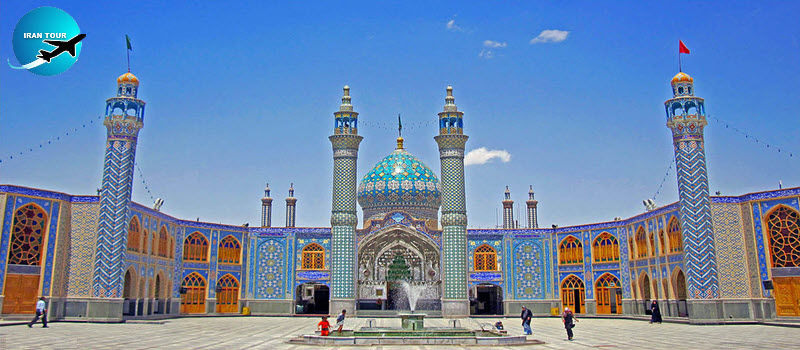 |
Imamzadeh Helal ibn Ali
This imposing complex in the center of Aran consists of a sanctuary, an Eivan flanked by tiled minarets, and two courtyards, surrounded by rows of pilgrims' lodgings. The core of the structure is Safavid, but it was excessively rebuilt in later periods, and most of the building is modern. The wooden door opening onto the north courtyard has an inscription reporting that it was commissioned by Fathali Shah Qajar in 1849 and is the work of Ostad Baqer. The complex is very respected by locals. Every year on the 21st of Ramazan, the people of the Kashan region assemble here to take part in remembrance ceremonies of Imam Ali.
 |
Qazi Mosque
This mosque comprises several sections from various historical periods, the most ancient of which belong to the Seljuk reign. The sections are distributed over two floors. The ground floor houses a spacious but rather gloomy prayer hall built in the style of primeval Arab mosques. It features eighty sturdy pillars, each uniquely shaped. The upper floor has an ancient four-Eivans court and a number of prayer halls, each reserved for a particular season. Unlike the basement prayer hall, the halls of the upper floor demonstrate precise geometric forms and clear lines. Their construction started during the Il-Khanid period and continued in the following epochs. The largest prayer hall on the south side is notable for its stucco inscription in Tholth script. Neighboring it is a hypostyle hall with a Moqarnas decorated mihrab. The date on the mihrab (1850) indicates the last restoration that was implemented in the mosque. To the west of the mosque is a crypt known as Five Imamzadehs.
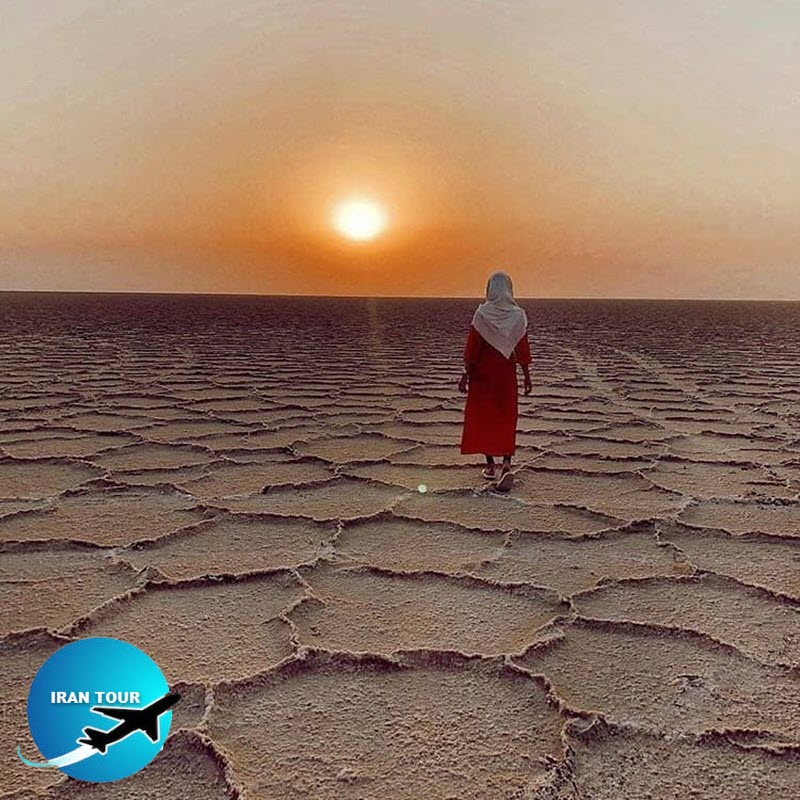 |
Bidgol
Formerly Aran and Bidgol were separate villages, but recently they have been united as one town. Despite this, both of them have retained particular features. Although these features may be indiscernible to guests, they allow the natives to unmistakably distinguish residents from either part.
Imamzadeh Hadi
This Safavid Period building is said to mark the grave of a descendant of Imam Zein al-Abedin. It has a beautiful sanctuary crowned with a lofty tiled dome and a pair of minarets. A tidy courtyard and a handsome Eivan are also notable. Numerous renovations of the later periods somewhat draw the visitor's attention away from the austere architectural core of the building, but its fanciful paintings compensate for this.
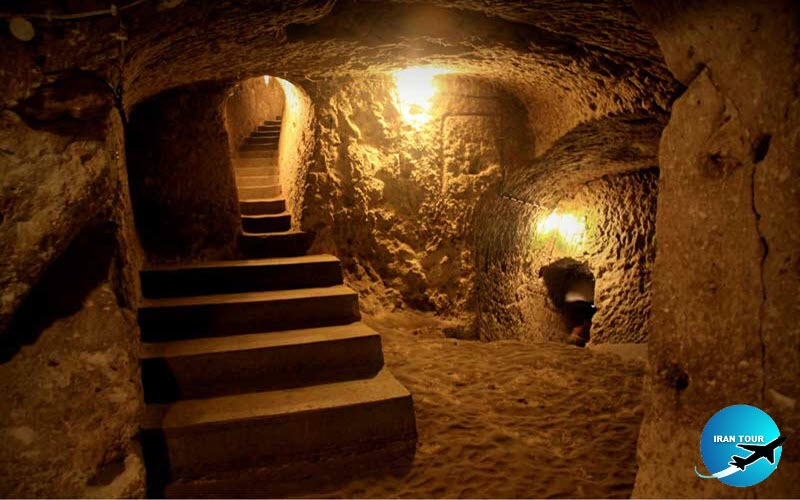 |
Nush Abad
Threatened by the desert only a few steps away,
this town features several relics that testify to its ancient history. Nush Abad is dominated by an imposing fort with high mud-brick walls and corner towers. The remains of several badly ruined forts can be also found in the town's vicinity.
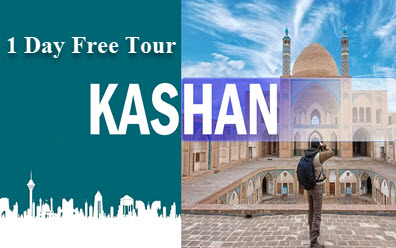 |
Congregational Mosque
This mosque has a spacious courtyard with two lofty Evans on the south and north sides. The south Evan features a stucco inscription in Tholth script with Koran verses. The end of the inscription has been obliterated, and its date is unknown. The mosque is topped with a brick minaret. Although its date is also unknown, it is doubtless a Seljuk work. The only date found in the mosque (1721) is carved on one of its doors.
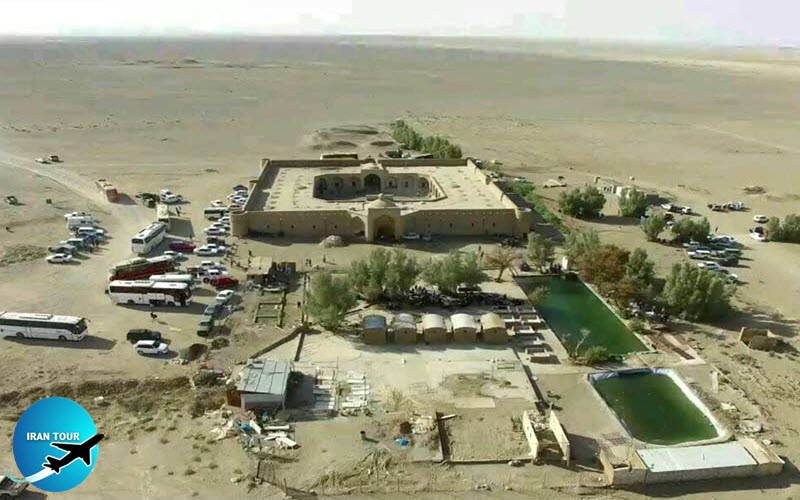 |
Maranjab Caravanserai
It is believed that during the rule of Shah Abbas I, 999 caravanserais were built in Iran. Maranjab is one of the largest and most beautiful of them. In addition to its interesting architectural features, it is also remarkable for its favorable position for the exploration of Salt Lake, Sargardan Island, and the moving sand dunes of the desert. The caravanserai is turned into an Eco-tourism hotel for ecotourists. Maranjab Desert Tour
- Details
- Category: Where to go in IRAN